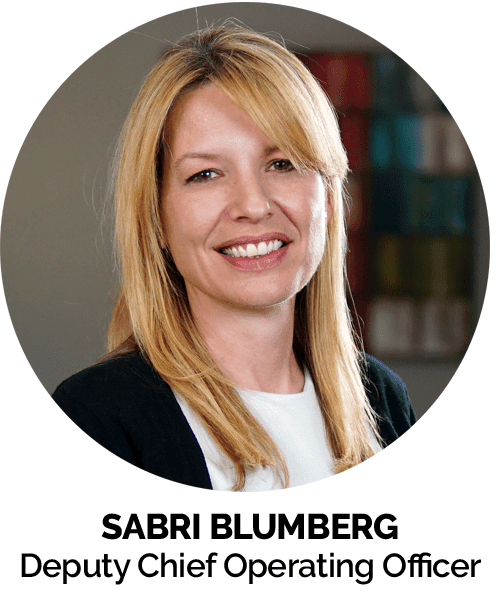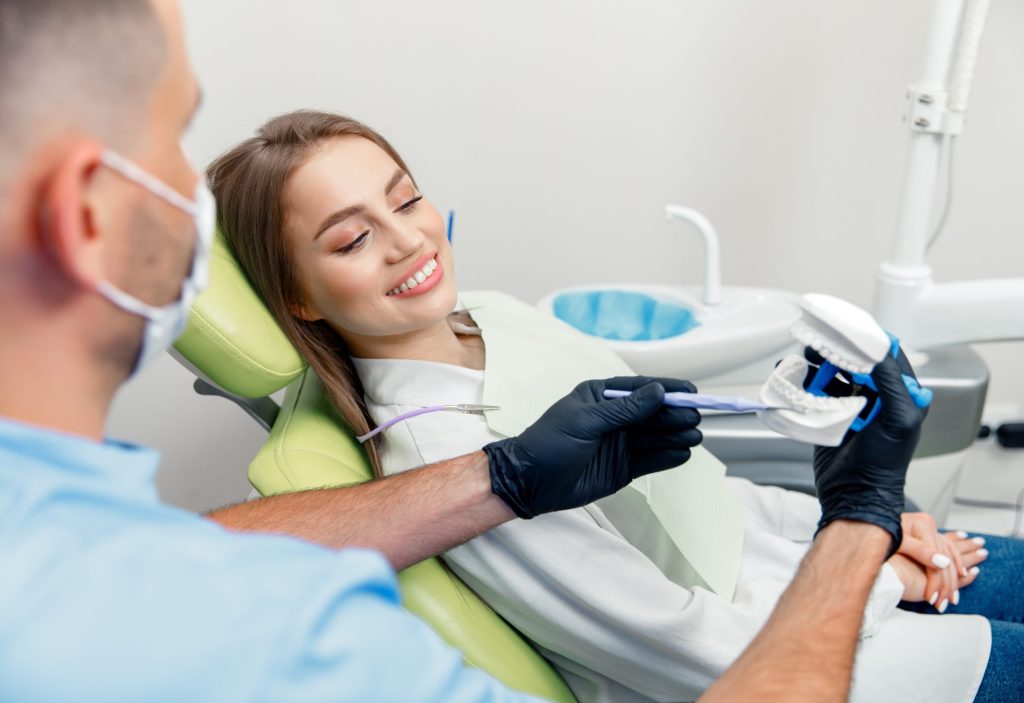
This week’s blog post comes from the “Ask Sabri” column in our magazine. As it addresses a question that is highly relevant to many dental practice owners right now, we wanted to share it on our blog, as well. Enjoy!
Q: What kind of marketing should we do to get more patients for cosmetic and full-mouth services?
Great question! For this, I would separate marketing into two categories: marketing to your patients of record and publicly advertising for new patients.
Typically, offices that do a high volume of cosmetic dentistry have a large patient base from GP services and that’s where they generate the majority of their cosmetic cases.
And I say the word “generate” intentionally, because no matter how large your patient base is, cosmetic cases don’t just fall into your lap. Well…a few probably will, but you’ll also be missing out on a ton of cases if you aren’t active about finding them in your patient base.
So, the first priority is always to simply increase general patient volume (between hygiene, reactivation, and new patients), and market cosmetic services to these patients-of-record.
Then you can add strategic new patient marketing on top of that.
Certainly, there are people out there looking for veneers, Invisalign, smile makeovers, large restorative cases, etc., so you can and should advertise publicly. However, marketing cosmetic services directly to new patients can be a little tricky and expensive, so you need to be smart about it.
Marketing to Your Patients-of-Record
Don’t assume your patients already know which services you offer
I can’t even count the number of times I’ve spoken to a dentist that was flabbergasted to find out a long-term, loyal patient had gone elsewhere for clear aligners or veneers and then came back for their usual recall visit. When the dentist asks why they didn’t just do the clear aligners here, the patient says, “Oh, I had no idea you do clear aligners! I would have preferred to do them with you.”
So, it is always ironic to see a dentist aggressively advertising to the broader community (which is expensive) while doing very little to make their own patients aware of their services (which is very easy and affordable).
Ways to find more cosmetic cases among your patient base
Here are the things I would recommend doing to market and close cosmetic cases to your patients-of-record. This isn’t an exhaustive list, but these are the essentials:
- Do a brief cosmetic questionnaire with every patient while they are in the chair—and repeat it at each annual exam because things can change over time. (See this article from Dr. Michael Ofir for more on this questionnaire.)
- Send text message (SMS) promotions to your patients. There are plenty of text messaging services out there and you may already be using them for appointment
 confirmations or reactivation. Consider using it to offer a free consultation for implants, Invisalign, smile makeover, etc.
confirmations or reactivation. Consider using it to offer a free consultation for implants, Invisalign, smile makeover, etc. - Have lots of promotional material around your office. This includes posters, flyers, videos, before-and-after photos, etc. Put them up anywhere a patient’s eyes may be looking at any point; the waiting room, in front of or over the dental chair, front desk countertop, hallways, restrooms, etc.
- Send email promotions. Email marketing is vastly underutilized in dentistry. You can send promotional offers about these services, as well as write informative content about them in a monthly e-newsletter. Always include an attractive offer like a free consult or discount.
- Post relevant content on social media. Ideally, a large portion of your patient base should be following you on social media. (If you don’t know how to leverage social media effectively, attend the MGE New Patient Workshop!) So, post informative videos from the doctor, patient testimonials, smile reveal videos, before-and-after photos, etc. Again, include an attractive offer.
- Ensure your staff are educated on these services—so they can in turn educate patients. Your staff can’t educate patients about cosmetic services if they don’t have understanding themselves. So do some “lunch & learns” with your team. You may even consider offering your team an incentive structure, where if the hygienist or assistant, for example, gets a patient interested in a service (and then patient pays for the service), they receive a commission. Although, you will want to keep an eye on this so that staff aren’t awkwardly shoehorning it into conversations with patients who aren’t interested.
Advertising for New Patients
Things like Google ads, targeted social media ads, implant funnels, and direct mail can get pretty pricey. That’s okay if the marketing is working and you are scheduling and closing new patients for high-ticket services.
Three Keys to Marketing Cosmetic & Large Restorative Services Successfully
Each of these types of marketing can be effective. I’ve seen them all work well—but only if you do three things well:
1. Put a BIG focus on how incoming leads are handled
This is BY FAR the biggest problem I see with dental offices trying to advertise cosmetic services and big cases: not enough attention is put on how incoming phone calls are handled or how quickly appointment requests are followed up with.
Oftentimes with implant funnels or cosmetic ads, people submit an online form (instead of calling on the phone) to request a consultation or more information. That means your front office needs to actively reach out to these people in order to get them scheduled.
If your team calls every single one of these leads as soon as they come in and then keeps reaching out to them repeatedly until they make contact, it works great.
But if your front office doesn’t check on the leads until the end of the day or the next morning, and then only calls them once or twice before giving up—then you’ll end up wasting all your advertising money.
And when it comes to incoming phone calls, are your team members trained on how to handle these calls? Are you tracking the number of calls and what percentage scheduled an appointment? Do you have a call recording system, and if so, are you actually listening to the calls?
I’ve seen many dental offices try to implement ad funnels, but I’ve only seen a teeny-tiny percentage of them truly prioritize and handle the leads correctly. So, most dentists wind up jumping from marketing company to marketing company, blaming them for the bad results when really the fault was with their own internal systems.
If you are going to spend money on funnels or ads, you need to be set up organizationally to deal with these leads. You can’t just tell your already overloaded receptionist to do it and then assume it’s being done.
Ensure that someone is responsible for reaching these leads, and that they have time to do it and understand the importance of calling promptly. You’ll also need to check up on this routinely to ensure the leads aren’t being forgotten about—because it can be really easy for them to fall by the wayside when the office gets busy.
2. Don’t hire the “B Team” in an effort to save money.
With marketing companies, I typically find that you get what you pay for if you go with the cheapest option.
The reality is, you just can’t expect to pay $500 a month to get a ton of new patients for cosmetic cases. It’s just not going to happen. You’ll need to spend a few thousand a month to get quality service, and then you’ll have to be really sharp internally translate that into worthwhile return-on-investment.
Running an effective campaign requires skill and hard work. This means you’ll have to pay to get someone who really puts in the work.
Additionally, the smaller your ad budget is, the fewer people Google or Facebook will show your ads to.
So, spend the money and then watch the leads like a hawk to make sure they’re being called, your staff have good phone skills and training, and that these patients actually show up and accept treatment.

3. Get involved and track the results closely
The dentists I’ve seen do this successfully keep a constant eye on their marketing campaigns.
They look at how much money is being spent, cost per lead, percentage that schedule an appointment, which ads are getting the best response, percentage of patients that accepted treatment, revenue generated from each campaign, etc.
They are also able to look at the marketing company’s proposed strategy and ad designs, and then give intelligent feedback/direction.
I wish it was as easy as just hiring a marketing company and then watching new patients magically materialize in your chair—but unfortunately, it never seems to work out that way.
It requires active participation and some knowledge of how to oversee marketing activities from your role as the CEO or manager of your business.
If you don’t really understand what the marketing company is doing and don’t know how to judge the effectiveness of a marketing campaign, then it’s time to do a bit of learning. And (shameless plug here), the MGE New Patient Workshop is a great place to do that learning.
Summary
The essentials are:
- Build up your patient base and market your services to them first and foremost. It’s the cheapest and most effective way to find cosmetic and full-mouth cases.
- From there, add new patient marketing on top of that strong foundation.
- Be prepared to spend money if you want to attract new patients for specific high-dollar-value services.
- Closely track the results and train your team on all the internal things you need to do to make these marketing campaigns work.
I hope these tips help! And if you would like feedback on your practice’s marketing and some direction on what you should do next, schedule a free consultation here. We’ll give you our two cents with no strings attached.



No Comments
Be the first to start a conversation